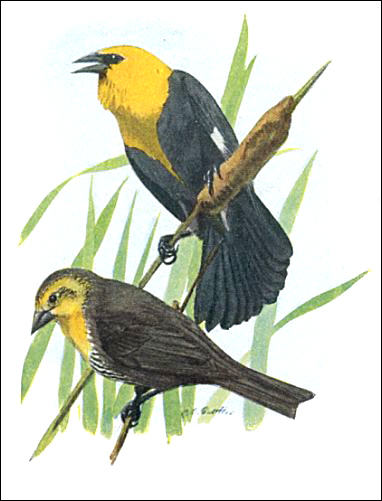
Human females in our current society—not males—are the visually flamboyant sex. Lipstick, eye shadow, nail polish, and colorful attire are just part of feminine display. Although occasionally disavowed, most people will admit that getting and keeping a man is a good part of this, though status with peers may play a major role, too. Why, then, is it so different with many birds? Trek through our desert plains or river valleys in the early morning hours, and almost certainly you'll see colorful males, such as orioles, red-winged or yellow-headed blackbirds, buntings, or grosbeaks. If you manage to spot a female, you may not even connect those drab birds to the same species as the males.
There are multiple reasons, actually, but certainly one is that a
brightly colored bird exposed on a nest while brooding eggs might as well put out a
sign for bypassing predators. If you aren't convinced, take a look at the
phalaropes. These shorebirds reverse household chores, with the male sitting on the
nest. And who's the gaudy one—the gadabout female! 
Arthur H. Harris, Laboratory for Environmental Biology, Centennial Museum, University of Texas at El Paso.
Desert Diary is a joint production of the Centennial Museum and KTEP National Public Radio at the University of Texas at El Paso.

A male and female Yellow-headed Blackbird. The female blends in nicely with the nest and surrounding vegetation, while the bright yellow hood of the male is easily visible. Painting by Louis Agasszi Fuertes (after Henshaw, 1921).
Henshaw, H. W. 1921. The book of birds. Common birds of town and country and American game birds. National Geographic Society, Washington, D.C. 195 pp.
Phalaropes. In the illustration. the brighter colored phalaropes are the females.